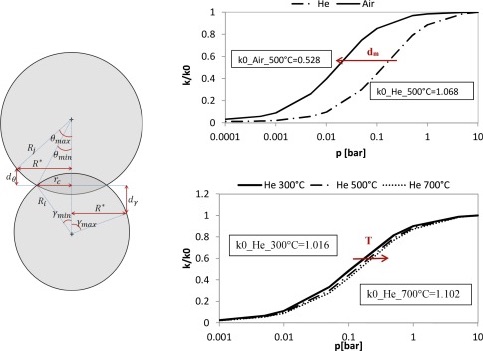Moscardini, M., Gan, Y., Pupeschi, S., Kamlah, M. (2018) Discrete element method for effective thermal conductivity of packed pebbles accounting for the Smoluchowski effect. Fusion Engineering and Design. 127: 192-201. [DOI][PDF:050_FED_2018]
Highlights
• A thermal DEM code is proposed for the evaluation of the effective thermal conductivity of ceramic breeder pebble beds.
• The Smoluchowski effect was implemented to consider the influence of the gas pressure.
• Numerical results perfectly resemble the experimental data reported in literature.
Abstract: In this paper, a Discrete Element Method (DEM) for the evaluation of the effective thermal conductivity of pebble beds in fusion blankets is presented. Pebble beds are multiphase materials in which both the solid and the gas phase filling the voids between particles coexist. The effective thermal conductivity of a pebble bed depends on the thermal properties of the two phases as well as on the system properties (e.g. gas pressure, temperature etc.). In particular, the pressure of the system is a key parameter for the heat transfer in a packed granular assembly since the thermal conductivity of a confined gas decreases with decreasing pressure (known as Smoluchowski effect). In this work, the influence of the gas pressure on the effective thermal conductivity in the Knudsen domain was implemented, to our knowledge, for the first time in a DEM code. The heat transfer mechanisms implemented are: when two particles touch each other the conduction through the contact area between them and, in any case, the conduction through the gas phase in the gap between neighbouring solid particles, may they be touching or not. These mechanisms are expected to dominate the heat transfer in a fusion breeder packed bed. Parametric studies were carried out to investigate the influence of the solid and gas materials, temperature, pressure and compression state. Numerical results were compared with existing experimental literature data and recent experiments carried out at Karlsruhe Institute of Technology (KIT).
Full paper can be downloaded via Publications page.

Leave a Reply